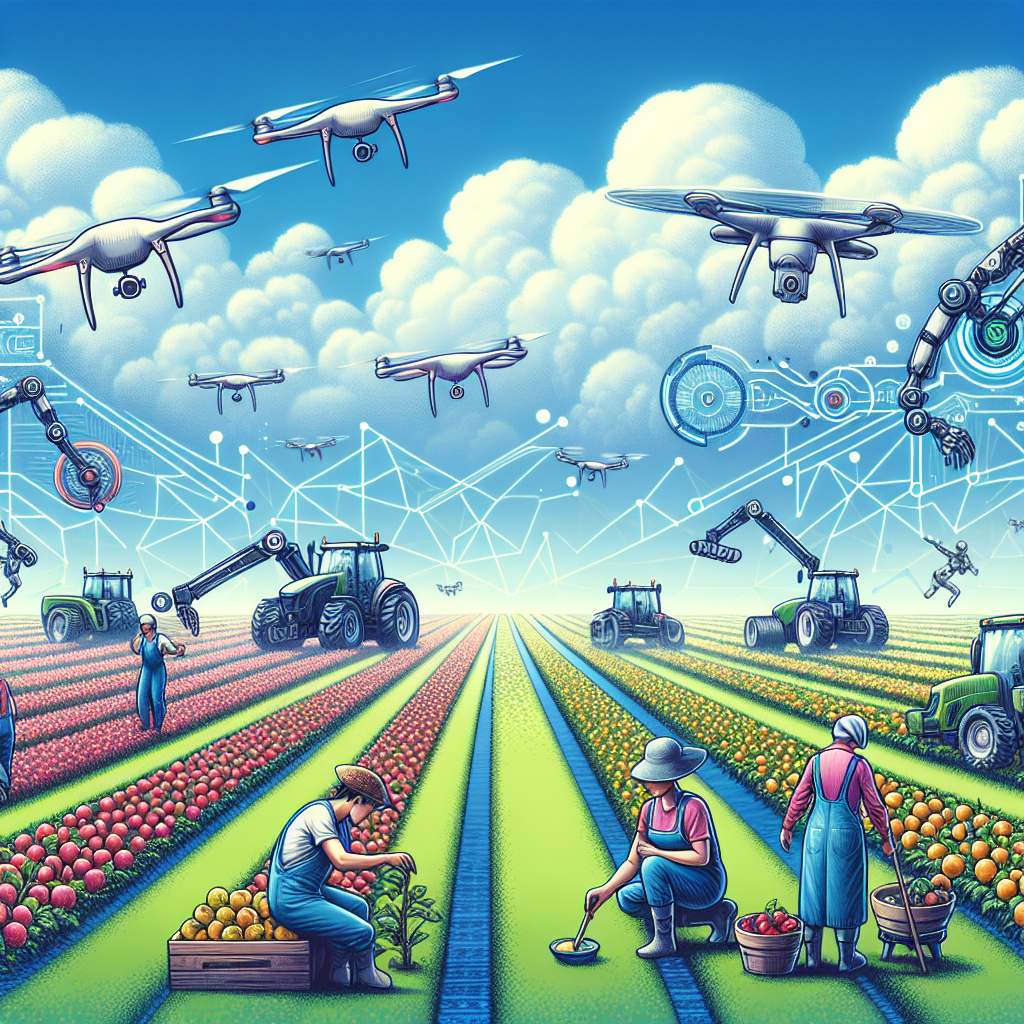Introduction
Artificial intelligence (AI) is revolutionizing various industries, and agriculture is no exception. With the advancements in AI technology, farmers are now able to automate various processes, increase efficiency, and improve productivity. However, the impact of AI on agricultural labor and workforce development is a topic of debate. While some argue that AI will replace human workers, others believe that it will create new job opportunities and enhance the skills of the existing workforce. In this article, we will explore the impact of AI on agricultural labor and workforce development.
Impact of AI on Agricultural Labor
1. Automation of Routine Tasks
One of the key benefits of AI in agriculture is the automation of routine tasks. AI-powered machines can perform tasks such as planting, watering, and harvesting crops with precision and efficiency. This reduces the need for manual labor and allows farmers to focus on more strategic tasks. As a result, the demand for agricultural laborers may decrease in the future.
2. Increased Productivity
AI can help farmers increase productivity by providing valuable insights and recommendations. For example, AI-powered drones can collect data on crop health and soil conditions, allowing farmers to make informed decisions about irrigation, fertilization, and pest control. This can lead to higher yields and better quality crops. While this may reduce the need for manual labor, it also creates new job opportunities in data analysis and AI programming.
3. Improved Safety
AI-powered machines can also improve safety on the farm by reducing the risk of accidents and injuries. For example, autonomous tractors can navigate fields without human intervention, reducing the risk of accidents involving farm machinery. This can help attract more workers to the agricultural industry, as it is perceived as a safer and more attractive career option.
4. Skill Development
As AI technology becomes more prevalent in agriculture, there is a growing demand for workers with skills in data analysis, programming, and AI development. This creates new opportunities for workers to develop their skills and advance their careers. For example, farmers can learn how to use AI-powered tools to optimize their operations, while data analysts can help farmers interpret and apply the data collected by AI systems.
Impact of AI on Workforce Development
1. Upskilling and Training
As AI technology becomes more integrated into agriculture, there is a growing need for workers to upskill and receive training in new technologies. This can help workers adapt to the changing landscape of agriculture and remain competitive in the job market. Training programs and workshops can help workers develop the skills needed to work with AI-powered tools and systems.
2. Job Creation
While AI may automate certain tasks and reduce the demand for manual labor, it also creates new job opportunities in areas such as data analysis, AI development, and robotics. Workers with the right skills and expertise can find employment in these emerging fields and contribute to the growth and development of the agricultural industry. This can help mitigate the potential impact of job displacement due to AI automation.
3. Collaboration Between Humans and Machines
AI can enhance the capabilities of human workers by providing valuable insights and recommendations. By working collaboratively with AI-powered tools, workers can improve efficiency, productivity, and decision-making. This collaboration between humans and machines can lead to better outcomes for farmers and help ensure the sustainability of agriculture in the long term.
FAQs
1. Will AI replace human workers in agriculture?
While AI may automate certain tasks and reduce the demand for manual labor, it is unlikely to completely replace human workers in agriculture. AI technology can enhance the capabilities of human workers and provide valuable insights and recommendations. By working collaboratively with AI-powered tools, workers can improve efficiency, productivity, and decision-making.
2. What skills are needed to work with AI in agriculture?
Workers in agriculture can benefit from developing skills in data analysis, programming, and AI development. These skills can help workers adapt to the changing landscape of agriculture and remain competitive in the job market. Training programs and workshops can help workers develop the skills needed to work with AI-powered tools and systems.
3. How can AI benefit the agricultural industry?
AI can benefit the agricultural industry by automating routine tasks, increasing productivity, improving safety, and creating new job opportunities. AI-powered machines can perform tasks such as planting, watering, and harvesting crops with precision and efficiency. This reduces the need for manual labor and allows farmers to focus on more strategic tasks.
Conclusion
The impact of AI on agricultural labor and workforce development is complex and multifaceted. While AI technology has the potential to automate certain tasks and reduce the demand for manual labor, it also creates new job opportunities and enhances the skills of the existing workforce. By upskilling and training workers in new technologies, the agricultural industry can adapt to the changing landscape of agriculture and remain competitive in the global market. Collaboration between humans and machines can lead to better outcomes for farmers and help ensure the sustainability of agriculture in the long term.

